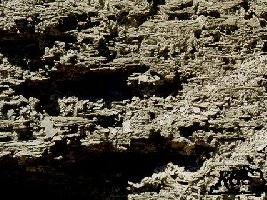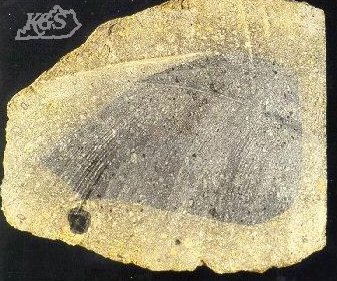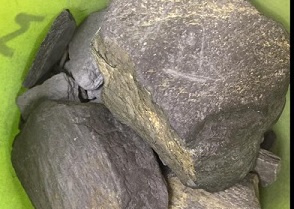Rocks
The basic building blocks of all rocks, minerals, liquids, and gases are chemical elements, which are made up of various combinations of atoms. For example, when lead atoms combine with sulfur atoms, the mineral galena is formed.
A mineral is a naturally occurring solid with a definite chemical composition and crystal structure. Rocks are naturally occurring solids composed of one or more minerals. Rocks are identified by the minerals they contain and are grouped according to their origin into three major classes: sedimentary, igneous, and metamorphic. Each group is subdivided on the basis of texture and mineral composition.
Most of the rocks found in Kentucky are sedimentary. Sedimentary rocks are formed from (1) the weathering and transport of preexisting rocks and (2) the chemical precipitation of sediments. Examples of sedimentary rocks are limestones, sandstones, and shales. Igneous rocks result from the cooling of molten rock or magma to create rocks such as granites, basalts, and rhyolites. Metamorphic rocks have been physically and mineralogically changed by heat and pressure to form another type of rock; for example, the sedimentary rock limestone will become the metamorphic rock marble; the sedimentary rock shale will become the metamorphic rock slate; and the igneous rock granite will become the metamorphic rock gneiss (pronounced nice). Igneous and metamorphic rocks are not common in Kentucky but have been observed in glacial drift in northern Kentucky, and have been found as constituents in sandstones in eastern Kentucky and in very deep wells drilled throughout the state.

Sedimentary Rocks
Sedimentary rocks are the most abundant rock type exposed at the surface of the earth and cover about 99 percent of Kentucky...Read more

Igneous Rocks
In Kentucky, a dark-colored igneous rock, peridotite, occurs in sills and dikes (intrusions) in Elliott County...Read more

Metamorphic Rocks
The principal metamorphic rocks are schist, phyllite, gneiss, marble, quartzite, and slate...Read more
Meteorites
The principal meteorite rocks are classified as irons (siderites), stones (chondrites) and stony irons (pallasites). Each classification contains sub-classifications with stones being the most common to fall, whereas the irons are the most recognizable. Stones can look like terrestrial rocks, and pallasites contain olivine xenocrysts. Irons generally have a widmanstatten pattern of interlocking crystals that is very distinctive and visible when the iron is cut, polished and etched and is indicative of iron meteorites. Read more
